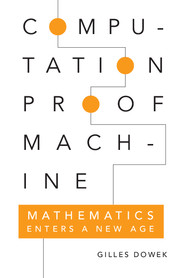Book contents
Conclusion: As We Near the End of This Mathematical Voyage …
Published online by Cambridge University Press: 05 May 2015
Summary
as this mathematical journey draws to its conclusion, let us cast a look at the unresolved problems we have encountered along the way and which may outline the panorama of research to come.
We have seen that the theory of computability allows one to show that, in all theories, there exist propositions both provable and short which have only long proofs, but that examples of such propositions are, as of today, mere artifices: the methods we know are too rudimentary to allow us to prove that real mathematical theorems such as the four-color theorem, Hales's theorem, or others have no short proofs. New methods must therefore be invented. Besides, the philosophical debate about the link between proof and explanation would be greatly clarified if one could state with certainty that a specific theorem has no short axiomatic proof.
Another question that remains unanswered to this day concerns the possibility of practicing mathematics without ever resorting to axioms. When axioms are compared to computation rules, they appear to be static objects: they are there, once and for all, as unchanging as they are true. Computation rules, on the contrary, enable mathematicians to do things – to shorten proofs, to create new ones, and so on. And, more importantly, thanks to the notion of confluence, computation rules interact with each other. As a consequence, every time one successfully replaces an axiom with a computation rule, there is cause to rejoice. Yet the fact that this is desirable does not always make it possible. In certain cases, we may have no other choice but to put up with axioms. The question is: in which cases, precisely?
Church's thesis has given us a glimpse of a new way of formulating natural laws. These would no longer be phrased as propositions but expressed by algorithms. Reformulating Newton's law in mechanics, or Ohm's law in electricity, should not pose much of a problem, but more recent theories such as quantum physics will require more work.
- Type
- Chapter
- Information
- Computation, Proof, MachineMathematics Enters a New Age, pp. 136 - 138Publisher: Cambridge University PressPrint publication year: 2015



